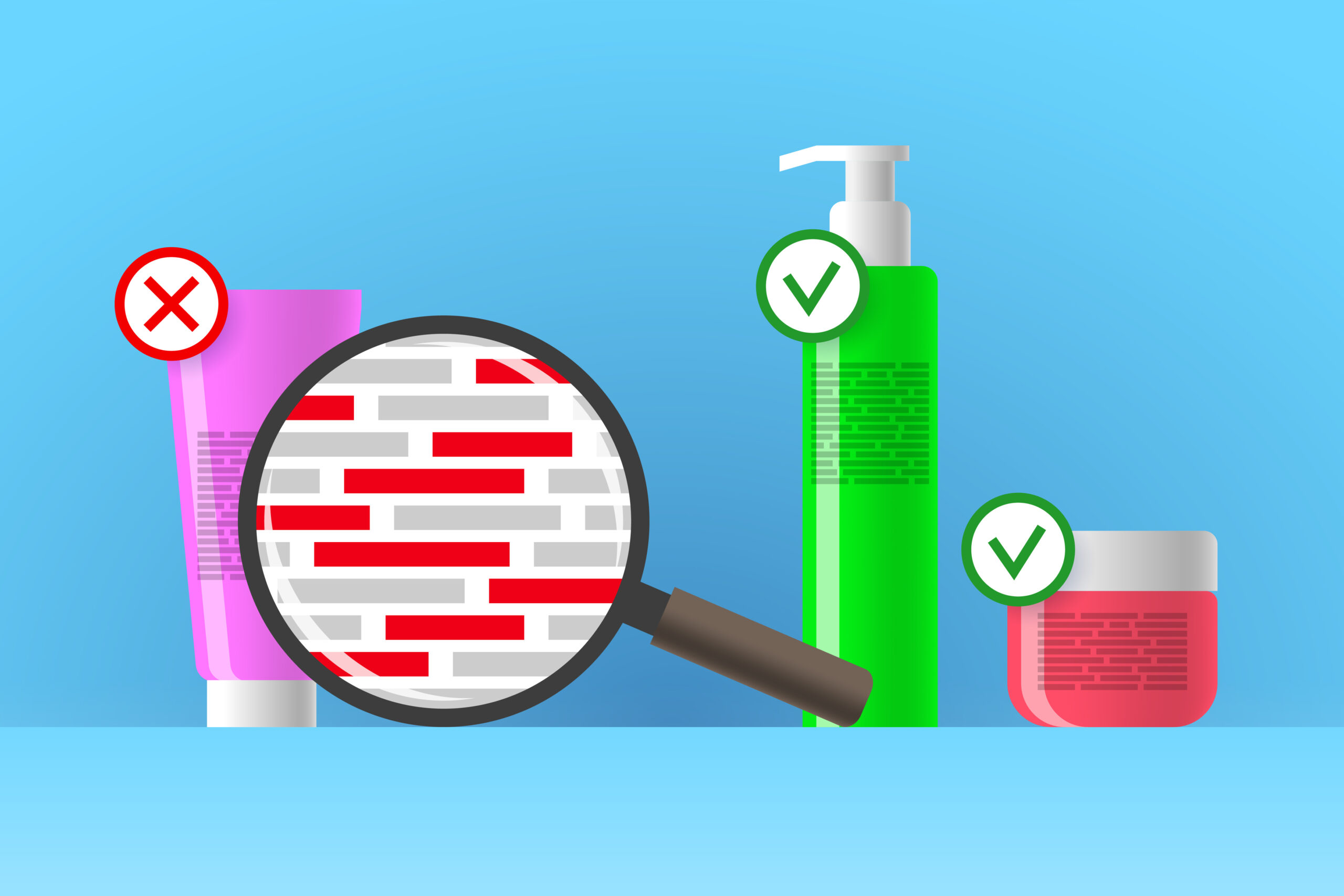
The INCI (International Nomenclature of Cosmetic Ingredients) system has become the global standard for listing ingredients in cosmetics. Initially developed in the 1970s with the goal of simplifying ingredient identification for healthcare professionals, it has grown to serve a much wider role. Today, it’s central to product labeling worldwide. But is it doing enough to help consumers? While INCI offers critical benefits in transparency and safety, it can also be an overwhelming, confusing tool for everyday shoppers. Here’s a closer look at both sides of the INCI coin.
The Origins of INCI: A Safety Foundation
The INCI system was created by the Personal Care Products Council (PCPC) in the USA, aiming to provide healthcare professionals with a universal way to identify cosmetic ingredients. This made it easier for dermatologists, pharmacists, and doctors to track substances that might trigger skin reactions or allergies—especially crucial for people with sensitive skin. Its medical roots served a specific purpose: to aid professionals in assessing product safety and managing reactions.
Over time, however, INCI’s purpose has broadened. Its use has expanded beyond the medical community to regulatory bodies, global brands, and even everyday consumers. But herein lies the challenge: While INCI works great for professionals, the average consumer is often left in the dark.
The Benefits: Why INCI Matters
1. Global Standardisation and Clarity – In an increasingly globalised market, standardisation is a win for everyone. No matter where you buy your product, the ingredient list remains the same. This consistency across regions ensures that consumers aren’t misled by different names for the same ingredients and promotes better safety tracking by regulatory bodies.
2. Professional Transparency – From a healthcare standpoint, INCI enables doctors and dermatologists to easily identify ingredients. This is invaluable when diagnosing skin issues or allergies. A standardized list allows healthcare providers to make well-informed decisions and offer better guidance to their patients.
3. Regulatory Compliance – Regulatory bodies worldwide rely on INCI’s standardisation to ensure cosmetic products meet safety standards. As new ingredients and formulations constantly enter the market, consistent ingredient names help keep track of their safety and efficacy.
4. Consumer Safety – For those with allergies or skin sensitivities, the INCI system provides an essential layer of safety. By offering a transparent ingredient list, it allows consumers to quickly spot potential irritants and make better choices for their skin.
The Drawbacks: Why INCI Can Be Confusing for Consumers
1. Unfamiliar, Hard-to-Pronounce Ingredients – For the everyday shopper, an INCI list can feel like a foreign language. Ingredient names are often long, scientific, and hard to decipher. Who, for instance, can easily understand what “Hydroxypropyltrimonium Hydrolyzed Wheat Protein” actually does? For most consumers, only familiar ingredients like “aloe vera” or “shea butter” stand out. For many, it’s a game of trial and error.
2. Information Overload – Cosmetic product labels can be long and complex. With so many ingredients listed—often in a technical, scientific format—consumers struggle to understand what’s essential. The fact that the ingredients are listed in order of concentration further complicates things for those not versed in chemistry.
3. The Fear of “Chemicals” – The word “chemical” often raises alarm bells, and INCI’s list of complex-sounding chemicals can lead to unnecessary fear. Take parabens, for instance. Though they are widely considered safe in small doses, their presence on a label often sparks concern. This fear, fuelled by misinformation, can make consumers mistrust the entire INCI system.
4. Lack of Context – The INCI system doesn’t explain the role or purpose of each ingredient. For example, the average shopper might see “Butylene Glycol” on a label, but without an explanation, they might be confused or concerned. Many consumers don’t understand that this ingredient is a humectant, designed to lock in moisture. Without context, distinguishing between helpful and harmful ingredients becomes a guessing game.
Allergens: A Controversial Grey Area
One of the most contentious issues surrounding the INCI system is its handling of allergens. While all cosmetic products are subject to rigorous safety testing, this doesn’t mean they are guaranteed to be allergy-free. Allergies vary from person to person, making it nearly impossible to create a “one-size-fits-all” solution.
The Case for Highlighting Allergens
Consumers with known sensitivities or allergies could benefit from clearer labeling of allergens. For example, a bold label noting “contains macadamia oil” or “contains wheat proteins” would help these consumers quickly identify potentially harmful ingredients. Moreover, it could raise awareness of lesser-known allergens, like sodium benzoate or isoeugenol, that are not on the official allergen list but could still cause reactions.
The Counterpoint: The Risk of Over-Warning
However, labeling every possible allergen could create more confusion than clarity. Allergies are highly individual. An ingredient that triggers a reaction in one person may be perfectly safe for another. Furthermore, overloading labels with warnings could make the product seem unsafe, even if it has passed all safety tests.
Striking a Balance: Could INCI Be More Consumer-Friendly?
INCI serves an invaluable purpose for professionals, but for consumers, its utility is often limited by lack of understanding. So, how can we make it more accessible?
1. Education is Key – Brands could bridge the knowledge gap by providing easy-to-understand resources about their ingredients. A quick online breakdown or even simplified explanations on packaging could help demystify technical jargon for consumers.
2. Simplified Labeling – A hybrid labeling system could work wonders. Imagine a product label with the INCI list alongside a section that highlights key ingredients with simple descriptions of their function (e.g., “moisturising,” “anti-ageing,” “soothing”). This would offer transparency while cutting through the complexity.
3. Stricter Regulation of Marketing Claims – Many cosmetic products use buzzwords like “natural,” “clean,” or “organic” to appeal to consumers. Stricter regulations could help ensure these terms aren’t misleading, providing clearer guidance when paired with an INCI list.
4. Ingredient Glossaries and Apps – Online glossaries and mobile apps could be a game-changer. This could further empower consumers to make informed choices without needing to decipher an entire INCI list. However these apps would have to be regulated!
Conclusion: The Way Forward
The INCI system undoubtedly serves an essential role in product transparency and safety. However, as the global cosmetics market evolves, so too must the way we present this information to consumers. For the system to truly empower everyday shoppers, it needs to be more than just a list of names— it needs to be understandable, accessible, and user-friendly.
While the issue of allergens is complex, the goal should be to offer consumers the tools they need to make informed decisions—without overwhelming them with too much information. Striking the right balance between scientific accuracy and consumer understanding will help the INCI system evolve from a tool for professionals into one that benefits everyone in the skincare and beauty community. By enhancing the accessibility of ingredient information, we can build trust between brands and consumers, ensuring that both science and safety are at the heart of every cosmetic product.

Theresa Callaghan
Theresa Callaghan, a PhD biochemist with over 35 years of experience in corporate skin care research, has held key R&D senior roles for companies including LVMH, Unilever, Marks & Spencer, J&J, Evonik, Hill-Top Research, and proDERM. In 2008, she created Callaghan Consulting International, focusing on cosmetic claims development with brands and ingredient suppliers. She is a widely published author, frequent speaker, and contributor to peer-reviewed journals. Her acclaimed book, 'Help! I'm Covered in Adjectives: Cosmetic Claims & The Consumer', is now in its second edition and translated. She is a member of the Society of Cosmetic Scientists (SCANCOS) and British Herbal Medicine Association. Theresa serves on the editorial peer review board of the International Journal of Cosmetic Science. She also mentors, and has her own Cosmetic Claims Insights Column with Euro Cosmetics.



